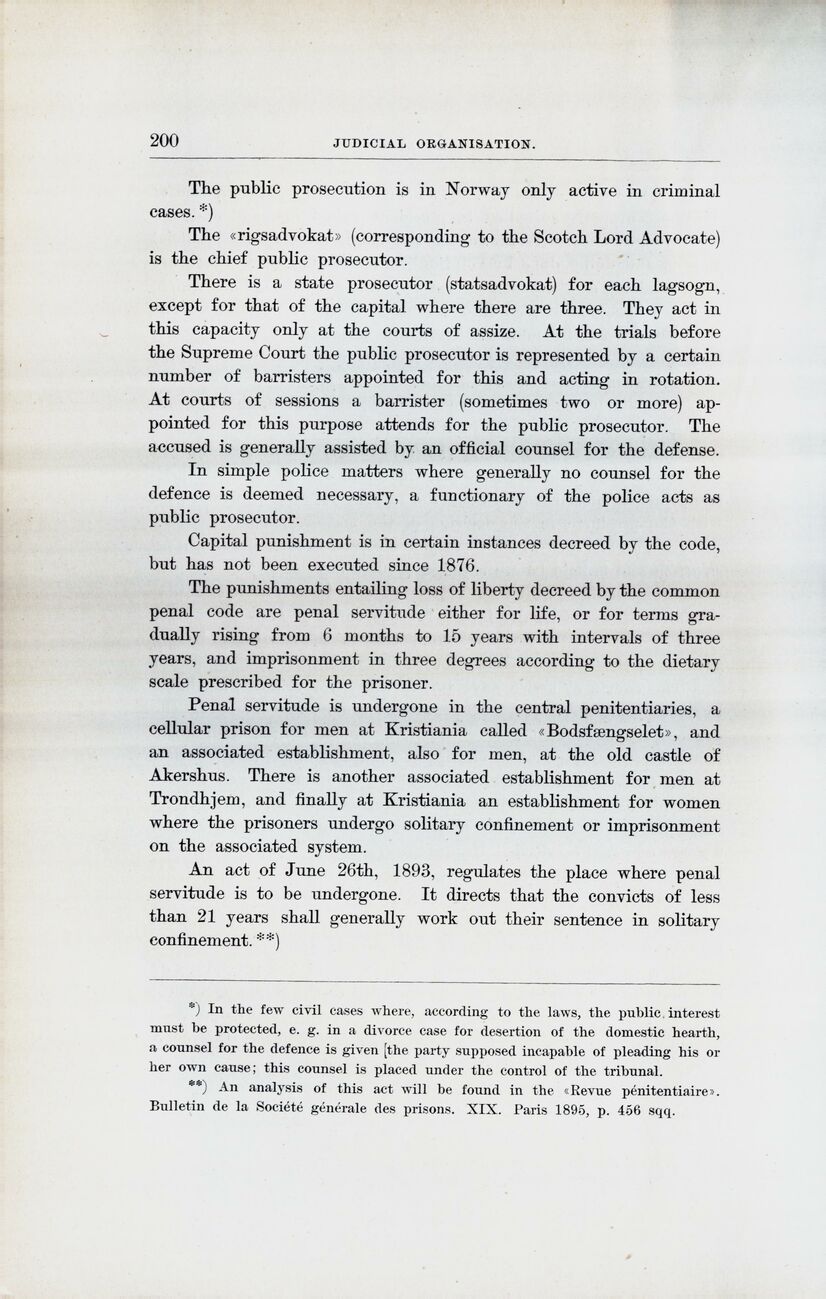
Full resolution (JPEG) - On this page / på denna sida - Judicial Organisation, by A. Færden

<< prev. page << föreg. sida << >> nästa sida >> next page >>
Below is the raw OCR text
from the above scanned image.
Do you see an error? Proofread the page now!
Här nedan syns maskintolkade texten från faksimilbilden ovan.
Ser du något fel? Korrekturläs sidan nu!
This page has been proofread at least once.
(diff)
(history)
Denna sida har korrekturlästs minst en gång.
(skillnad)
(historik)
The public prosecution is in Norway only active in criminal
cases. [1]
The «riksadvokat» (corresponding to the Scotch Lord Advocate)
is the chief public prosecutor.
There is a state prosecutor (statsadvokat) for each lagsogn,
except for that of the capital where there are three. They act in
this capacity only at the courts of assize. At the trials before
the Supreme Court the public prosecutor is represented by a certain
number of barristers appointed for this and acting in rotation.
At courts of sessions a barrister (sometimes two or more)
appointed for this purpose attends for the public prosecutor. The
accused is generally assisted by an official counsel for the defense.
In simple police matters where generally no counsel for the
defence is deemed necessary, a functionary of the police acts as
public prosecutor.
Capital punishment is in certain instances decreed by the code,
but has not been executed since 1876.
The punishments entailing loss of liberty decreed by the common
penal code are penal servitude either for life, or for terms
gradually rising from 6 months to 15 years with intervals of three
years, and imprisonment in three degrees according to the dietary
scale prescribed for the prisoner.
Penal servitude is undergone in the central penitentiaries, a
cellular prison for men at Kristiania called «Bodsfængselet», and
an associated establishment, also for men, at the old castle of
Akershus. There is another associated establishment for men at
Trondhjem, and finally at Kristiania an establishment for women
where the prisoners undergo solitary confinement or imprisonment
on the associated system.
An act of June 26th, 1893. regulates the place where penal
servitude is to be undergone. Tt directs that the convicts of less
than 21 years shall generally work out their sentence in solitary
confinement. [2]
<< prev. page << föreg. sida << >> nästa sida >> next page >>